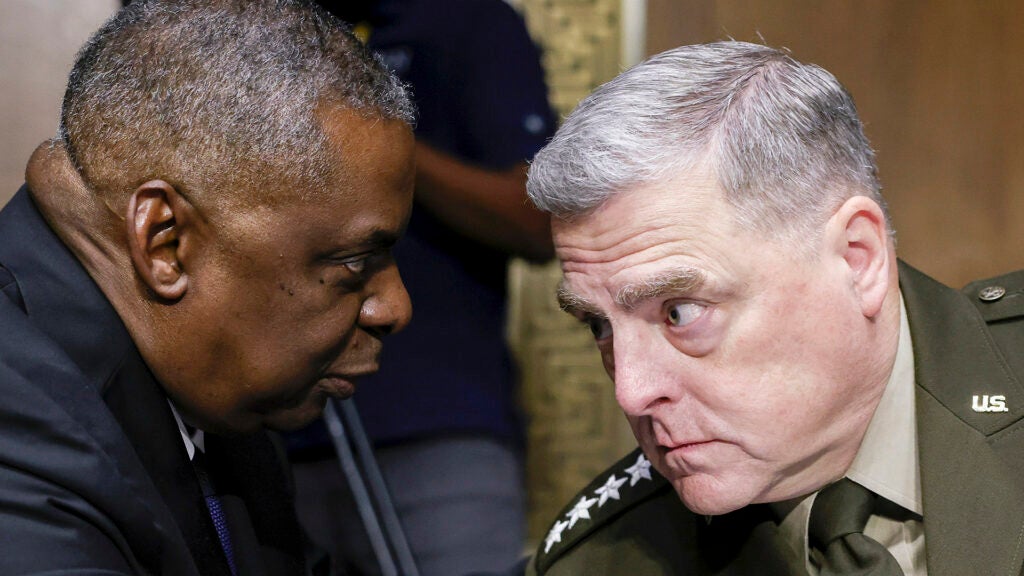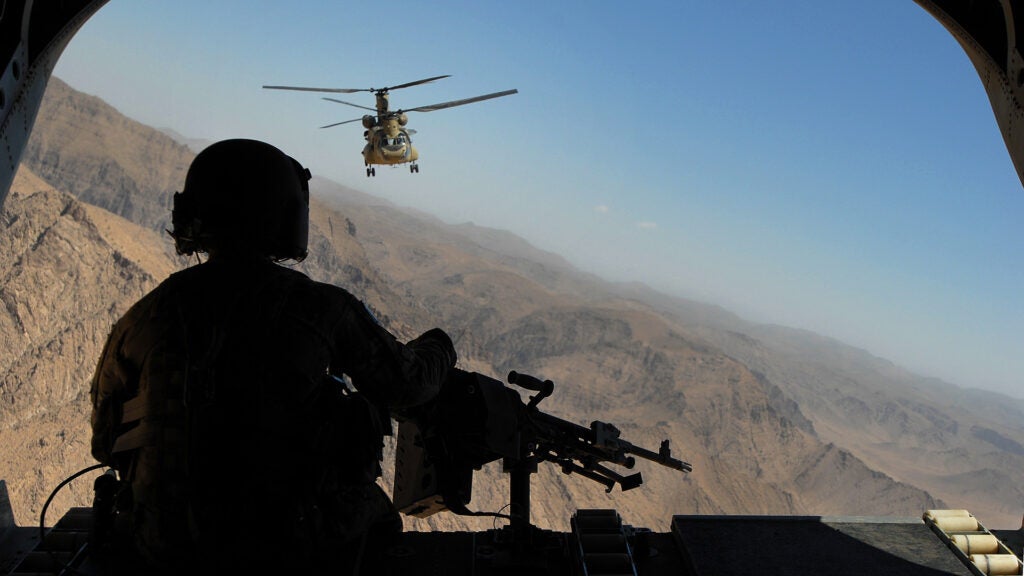Now that America’s longest war is over, top U.S. military leaders have finally acknowledged that they knew full well that President Joe Biden’s decision to withdraw the last of the U.S. troops from Afghanistan would seal the country’s fate.
By mid-July, the U.S. troops who had been advising Afghan troops and police had left the country, Army Gen. Mark Milley, chairman of the Joint Chiefs of Staff, told lawmakers on Tuesday. U.S. military leaders had warned that the Afghan troops and police only stood a chance of survival if those troops remained in the country.
“We all knew that when we pulled the advisors out – when we pulled the money out – that at some point in the future – most said it was in the fall – that the Afghan security forces were going to fracture and the government would collapse,” Milley tesfified before the Senate Armed Services Committee. “The speed at which that happens in August is a different animal.”
While several intelligence reports had correctly predicted that the Afghan military and government would likely collapse after the U.S. troop withdrawal, they did not anticipate that both would fall apart in just 11 days, Milley said.
“Most of those intelligence assessments indicated that that would occur in late fall, perhaps early winter,” Milley said. “Kabul might hold until next spring. It depends on when the intel assessment was written. So, after we leave, the assessments were pretty consistent – that you’d see a general collapse of the government and the military.”

Milley’s testimony is markedly different from the false hope that U.S. government officials were espousing over the spring and summer about Afghanistan’s chances for survival. President Joe Biden assured the country in July that a Taliban victory in Afghanistan was not inevitable and that it was “highly unlikely” that the Taliban would take over the entire country.
Milley himself foot-stomped this point when he told reporters later in July that while a Taliban military victory was a possibility, it was also “not a foregone conclusion.”
And just days before Kabul fell, Biden administration officials were still publicly asserting that a negotiated settlement short of a complete Taliban victory was still possible.
“Ultimately, our view is that the Afghan National Security Defense Forces has the equipment, numbers, and training to fight back, which will strengthen their position at the negotiating table,” White House spokeswoman Jen Psaki told reporters at an Aug. 10 news briefing. “We believe there’s a political process – that’s the only process that will successfully bring peace and stability to Afghanistan.”
As we now know based on Milley’s comments, the U.S. intelligence community had already determined that the Kabul government did not have long to live. The point of contention was when – not if – Afghanistan would fall.
It should be noted that the agreement between the U.S. government and the Taliban to withdraw all American forces from Afghanistan was struck under then-President Donald Trump’s administration. Trump also continued with the drawdown even though the Taliban increased attacks on Afghan troops and police.
In fact, the Taliban only met one condition of the withdrawal agreement: To not attack U.S. troops, Milley said on Tuesday.
Milley was not the only top U.S. military commander who foresaw that America’s Afghan allies could not survive without American forces on the ground. Marine Gen. Kenneth McKenzie Jr., the head of U.S. Central Command, told lawmakers on Tuesday that he had recommended last fall that the military keep 4,500 troops in the country
“I also have a view that the withdrawal of those forces would lead inevitably to the collapse of the Afghan military forces, and eventually the Afghan government,” McKenzie said.
On Nov. 9, former Defense Secretary Mark Esper recommended to Trump that the U.S. military maintain between 2,500 and 4,500 troops in Afghanistan until conditions on the ground permitted further reductions, Milley said.
But Trump fired Esper that very day and deliberations about the troop withdrawal became chaotic. Milley publicly revealed on Tuesday that he received an “unclassified, signed order” on Nov. 11 to pull all American forces out of Afghanistan by Jan. 15.
“After further discussions regarding the risks associated with such a withdrawal, the order was rescinded,” Milley said.
Ultimately, Trump ordered the military to reduce the number of U.S. troops in Afghanistan to 2,500, plus enablers, he said. By the time Biden took office, about 3,500 U.S. troops were in the country, roughly 1,000 more than the Pentagon admitted at the time.
Biden initially refused to commit to the withdrawal of all American forces from Afghanistan by the May 1 deadline agreed to by the Trump administration, but in April the president announced that he would end the U.S. military’s nearly 20-year presence in Afghanistan.
Tuesday’s hearing featured a tortured debate about whether military commanders had recommended that Biden keep 2,500 troops in Afghanistan, which ABC News’ George Stephanopoulos asked Biden about during an April interview.
“No, they didn’t,” Biden said at the time. “It was split. That wasn’t true. That wasn’t true.”
Psaki later tried to clarify Biden’s comments to Stephanopoulos when she tweeted on Tuesday: “He said advice was split, but consensus of top military advisors was 2500 troops staying meant escalation due to deal by the previous admin. @SecDef, the Chairman, and GEN McKenzie all reiterated.”

Under questioning from Sen. Tom Cotton (R-Ark.), Milley said his own opinion from the fall of 2020 until the end of the withdrawal was that the U.S. military should keep between 2,500 and 3,500 troops in Afghanistan to help create the conditions for a negotiated settlement to end the war.
But Milley declined to say what he recommended to Biden on whether any U.S. troops should remain in Afghanistan.
“I don’t discuss exactly what my conversations are with the sitting president in the Oval Office, but I can tell you what my personal opinion was, and I am always candid,” Milley said.
McKenzie told Cotton that he shared Milley’s assessment, but he too declined to say what he recommended to Biden.
Sen. Mike Rounds (R-S.D.) said that Army Gen. Austin “Scott” Miller had told lawmakers at a previous closed hearing that he had recommended keeping 2,500 troops in Afghanistan. Rounds asked if McKenzie’s advice had been conveyed to both Trump and Biden.
“There is a process for delivering recommendations from commanders in the field,” McKenzie said. “I was part of that process. While I’ve been very clear that I won’t give you my recommendation, I’ve given you my view, which I think you can draw your own conclusions from. And my view is that 2,500 was an appropriate number to remain; and that if we went below that number, in fact, we would probably witness a collapse of the Afghan government and the Afghan military.”
So, while America’s top generals were able to drop the circuitous doublespeak about Afghanistan surviving after the U.S. military withdrawal, old habits about avoiding questions on troop levels have proven much harder to break.
More great stories on Task & Purpose
Want to write for Task & Purpose? Learn more here and be sure to check out more great stories on our homepage.
